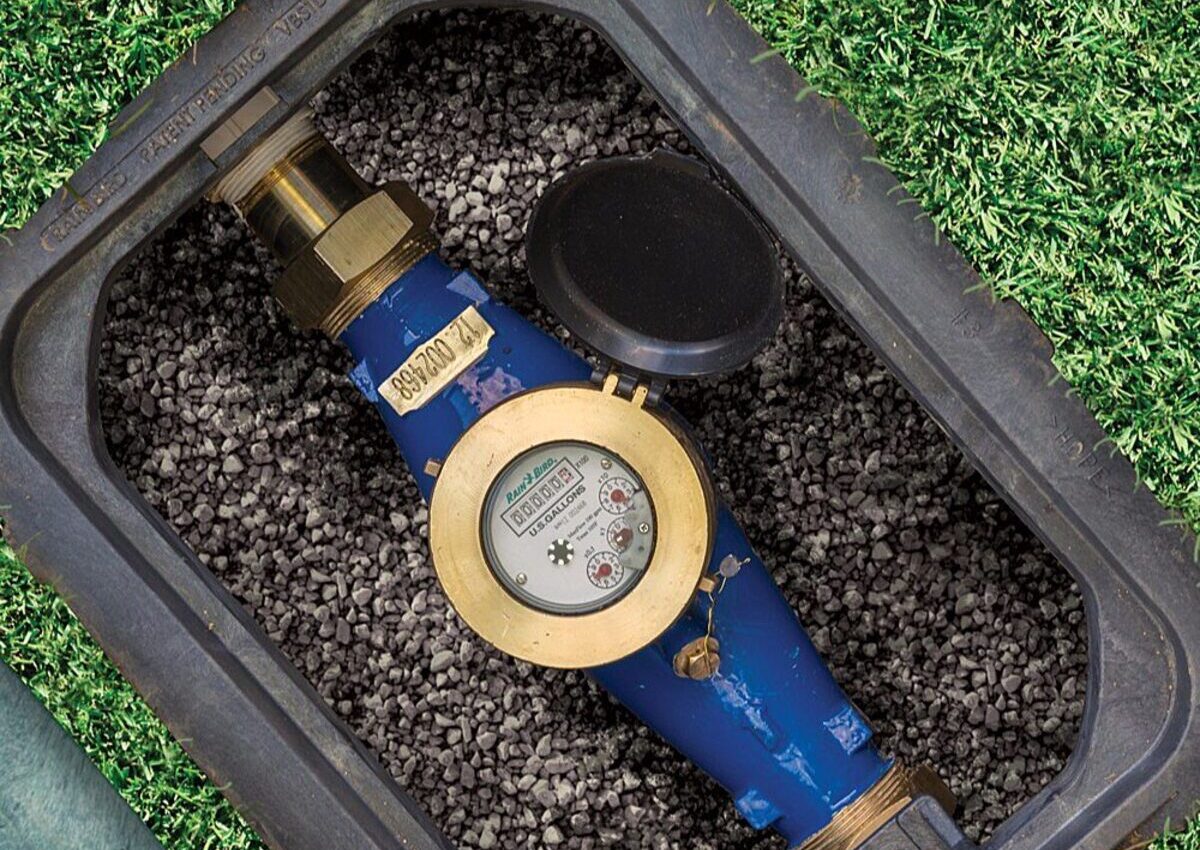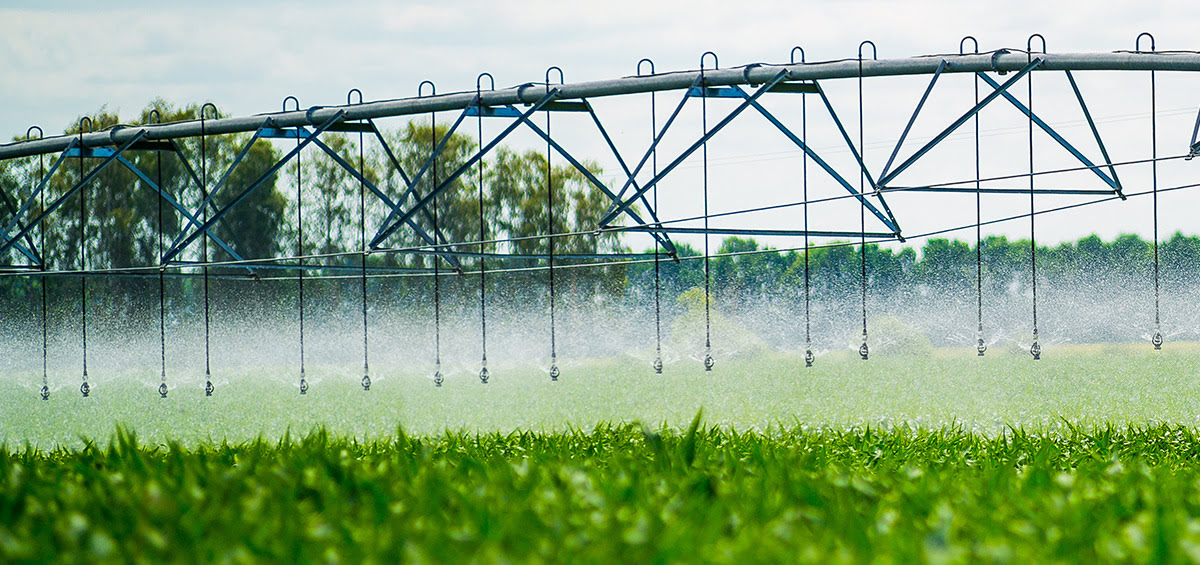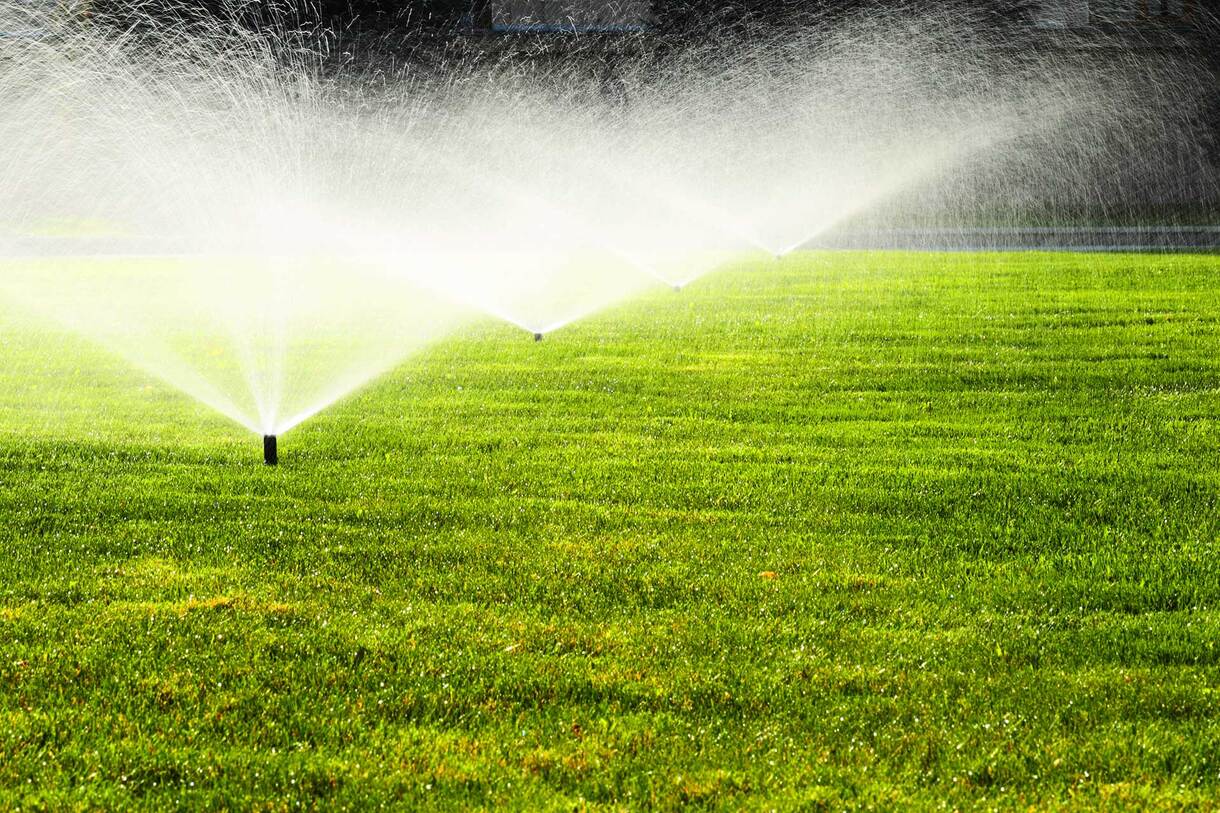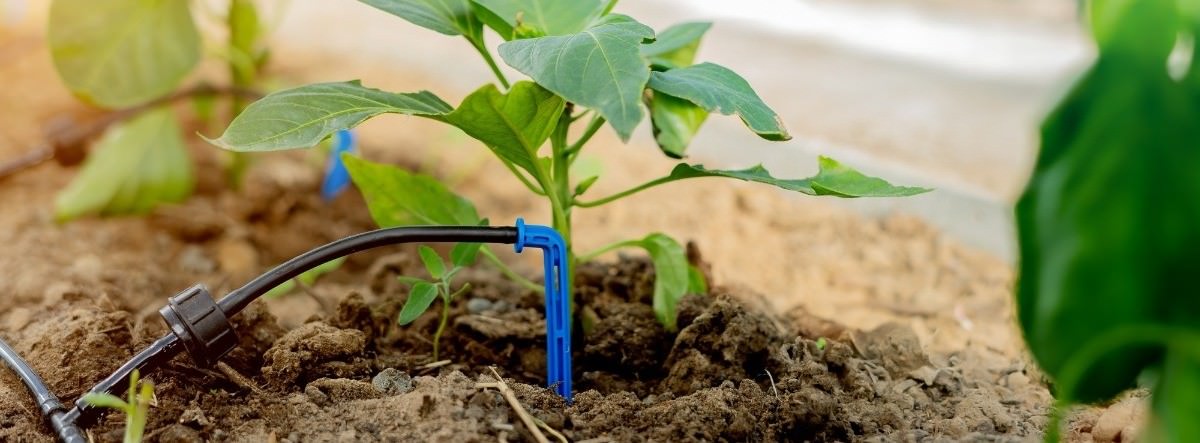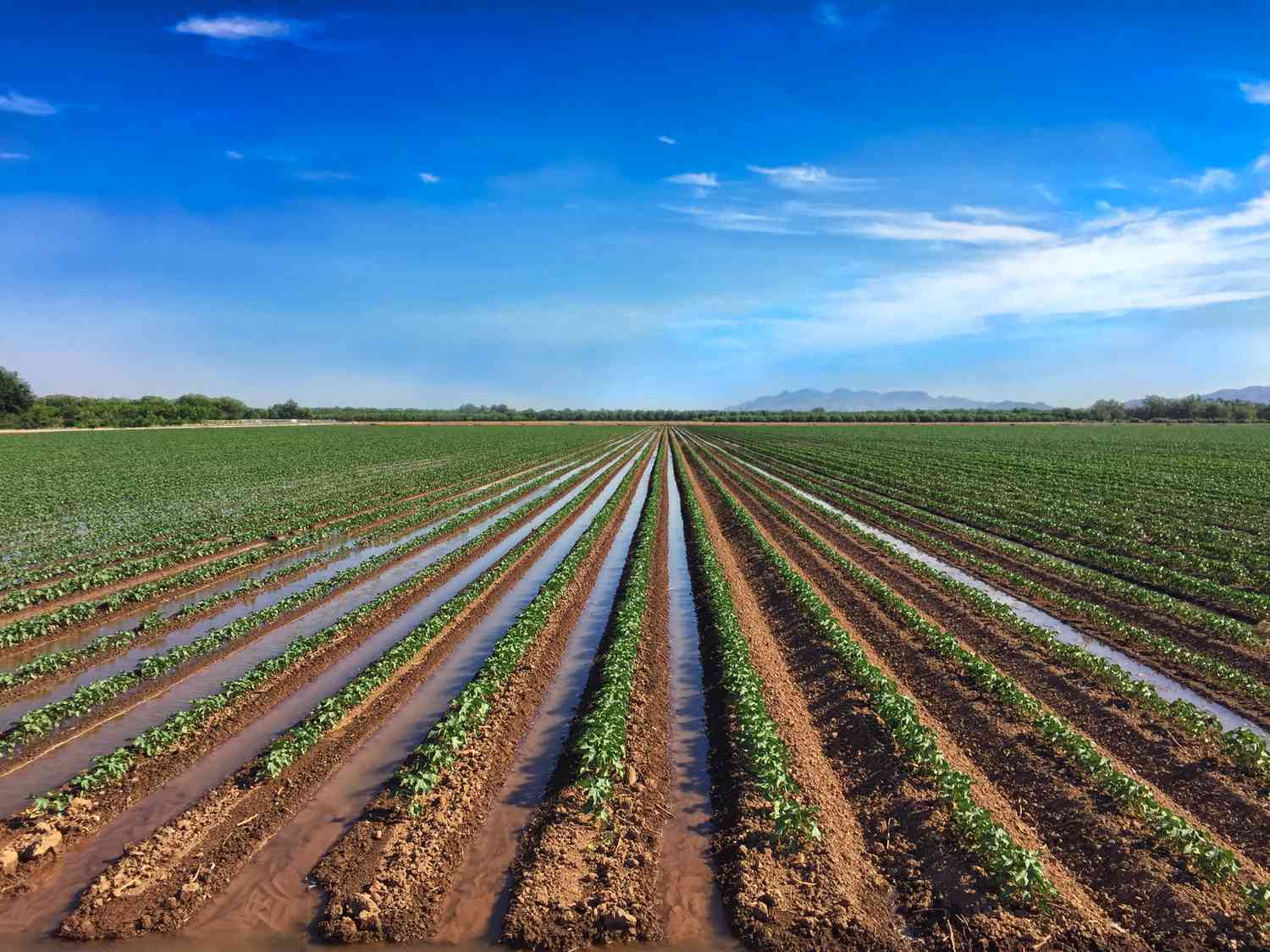Home>Gardening Basics>Tools and Equipment>What Is Center Pivot Irrigation


Tools and Equipment
What Is Center Pivot Irrigation
Modified: January 22, 2024
Discover the essential tools and equipment used in center pivot irrigation systems. Explore the benefits and mechanics of this efficient irrigation method.
(Many of the links in this article redirect to a specific reviewed product. Your purchase of these products through affiliate links helps to generate commission for Chicagolandgardening.com, at no extra cost. Learn more)
Table of Contents
Introduction
Center pivot irrigation is a revolutionary advancement in agricultural technology that has transformed the way crops are irrigated around the world. This method of irrigation allows for efficient water distribution, increased crop yields, and reduced labor requirements.
Center pivot irrigation systems are commonly used in large-scale agricultural operations, as well as in smaller farms and gardens. This method involves the use of a circular pivot system that rotates around a central point, evenly distributing water to crops in a circular pattern.
The concept of center pivot irrigation was first developed in the mid-20th century and has since become widely adopted due to its numerous benefits and advantages. This irrigation technique is not only highly effective but also environmentally friendly, as it helps conserve water resources and reduces the need for manual labor in the field.
In this article, we will delve deeper into the world of center pivot irrigation, exploring its definition, how it works, the components of a center pivot irrigation system, the advantages it offers, as well as the considerations and environmental impacts associated with its implementation.
Definition of Center Pivot Irrigation
Center pivot irrigation is a method of crop irrigation that involves the use of a circular, rotating system to distribute water to crops. It is named after the central pivot point from which the irrigation system revolves.
This irrigation technique works by using a series of sprinkler heads mounted on overhanging arms extending from a central pivot point. As the pivot moves in a circular motion, the sprinklers release water, creating a continuous irrigation pattern that covers a large area of cropland.
The system is typically powered by electric motors or diesel engines, which drive the rotation of the pivot. It is controlled by sophisticated software programs that regulate the speed and direction of the pivot, as well as the amount of water released from the sprinklers.
Center pivot irrigation systems can be designed to accommodate different field sizes and shapes. The length of the pivot arm can be adjusted to cover a smaller or larger area, depending on the specific requirements of the field.
This method of irrigation offers several advantages over traditional irrigation techniques. It provides a uniform and controlled distribution of water, minimizing the risk of overwatering or underwatering crops. It also reduces water runoff and evaporation, resulting in water conservation and increased efficiency.
Center pivot irrigation is commonly used in various agricultural settings, including grain crops, vegetables, and even vineyards. It can be implemented in both flat and sloping terrain, making it a versatile and adaptable irrigation solution for farmers around the world.
How Center Pivot Irrigation Works
Center pivot irrigation systems are designed to efficiently deliver water to crops by utilizing a circular rotating system. The irrigation process begins with a supply of water, which is typically sourced from wells, rivers, or reservoirs and stored in a large water storage facility.
The water is then pumped through a mainline pipe to the central pivot point of the irrigation system. From here, the water is carried through flexible hoses or pipes that run along the length of the pivot arm.
As the pivot rotates, the water is released from the sprinkler heads located along the pivot arm. The sprinklers are strategically positioned to ensure that the water is evenly distributed across the field.
The rotation of the pivot arm is controlled by electric motors or diesel engines, which are programmed to move at a specific speed and direction. This allows for precise coverage of the entire field, ensuring that no area is missed or subjected to excessive irrigation.
Center pivot irrigation systems are equipped with advanced control systems that monitor various parameters, such as soil moisture levels and weather conditions. This data is used to adjust the irrigation schedule and optimize water application, reducing the risk of overwatering or underwatering the crops.
In addition to water, center pivot irrigation systems can also be used to apply fertilizers and chemicals to the crops. Specialized equipment, such as fertigation units, can be incorporated into the system to inject these substances into the irrigation water, allowing for efficient and targeted application.
The length and size of the pivot arm, as well as the spacing and design of the sprinkler heads, can be customized based on the specific needs of the crops and the field. This flexibility allows farmers to adapt the system to different crop types, soil conditions, and field layouts.
Overall, the continuous rotation and even distribution of water provided by center pivot irrigation systems help to promote healthy plant growth and maximize crop yields. This efficient irrigation method has revolutionized farming practices, providing farmers with a reliable and effective solution for irrigating large areas of land.
Components of Center Pivot Irrigation System
A center pivot irrigation system consists of several key components that work together to deliver water to crops in an efficient and controlled manner. These components include:
- Pivot Point: The central pivot point serves as the anchor for the entire system and is responsible for supporting and guiding the movement of the pivot arm.
- Pivot Arm: The pivot arm is the main structure of the irrigation system. It extends radially from the pivot point and carries the water supply pipeline and the sprinklers.
- Sprinkler Heads: The sprinkler heads are strategically positioned along the pivot arm. These heads release pressurized water, creating a fine mist or spray that distributes the water over the crops.
- Mainline Pipe: The mainline pipe connects the water source to the pivot point. It carries the water from the source to the pivot point, where it is then distributed to the pivot arm.
- Control Panel: The control panel is the brain of the irrigation system. It houses the control software and the necessary electrical components to regulate the speed and direction of the pivot arm, as well as the timing and amount of water released.
- Power Source: The power source is responsible for driving the rotation of the pivot arm. It can be an electric motor or a diesel engine, depending on the specific requirements of the system.
- End Tower: The end tower is located at the end of the pivot arm. It provides support and stability to the system, ensuring that the pivot arm maintains its position and does not sag.
- Dropper Pipes: Dropper pipes are connected to the sprinkler heads and extend downwards towards the ground. They ensure that the water is evenly distributed over the crops and can be adjusted to control the trajectory of the water spray.
These components are carefully designed and engineered to work in harmony, allowing for precise and efficient irrigation. By effectively delivering the right amount of water to the crops, center pivot irrigation systems help to optimize plant growth, minimize water waste, and enhance overall crop productivity.
Advantages of Center Pivot Irrigation
Center pivot irrigation offers numerous advantages over traditional irrigation methods, making it a popular choice for farmers around the world. Some of the key advantages include:
- Water Efficiency: Center pivot irrigation is designed to deliver water directly to the root zone of the crops, minimizing water loss through evaporation or runoff. The controlled application of water helps to conserve water resources and reduce overall water usage in agricultural operations.
- Uniform Water Distribution: With center pivot irrigation, water is evenly distributed across the field, ensuring that every plant receives an adequate amount of irrigation. This helps to promote uniform growth and crop development, leading to improved crop yields and quality.
- Increased Crop Yields: The precise and efficient application of water provided by center pivot irrigation systems can result in higher crop yields compared to traditional irrigation methods. The consistent water supply helps to optimize plant growth and development, leading to healthier and more productive crops.
- Time and Labor Savings: Center pivot irrigation systems are automated and can be programmed to run on schedules or based on soil moisture sensors. This eliminates the need for manual irrigation, saving farmers time and labor. The ability to remotely monitor and control the system further enhances convenience and efficiency.
- Scalability and Versatility: Center pivot irrigation systems can be customized to fit fields of various sizes and shapes. The length and size of the pivot arm, as well as the spacing of the sprinkler heads, can be adjusted to accommodate different field layouts and crop types.
- Reduced Soil Erosion: By applying water in a controlled and regulated manner, center pivot irrigation minimizes the risk of soil erosion caused by excessive runoff. This helps to protect the topsoil and preserve its nutrient content, promoting long-term soil health and productivity.
- Reduced Chemical Use: Center pivot irrigation systems can be equipped with fertilizer and chemical injection capabilities. This allows farmers to apply fertilizers and pesticides directly through the irrigation water, reducing the need for separate application methods and minimizing chemical runoff.
- Energy Efficiency: While center pivot irrigation systems require energy to power the rotation of the pivot arm, modern systems are designed to be energy efficient. Electric motors and variable speed drives help to optimize energy consumption and reduce operating costs.
With its multitude of advantages, center pivot irrigation has revolutionized the way crops are irrigated, improving water efficiency, crop yields, and overall farm productivity. Its versatility and flexibility make it a reliable and efficient method for irrigating a wide range of crops and field sizes.
Considerations for Implementing Center Pivot Irrigation
While center pivot irrigation offers numerous benefits, there are several important considerations that farmers and landowners should take into account before implementing this irrigation system:
- Field Topography: It is essential to assess the topography of the field to determine if center pivot irrigation is a suitable option. Flat or gently sloping terrain is ideal for this type of irrigation system, as uneven or hilly land may pose challenges in achieving uniform water distribution.
- Water Source: Availability of a reliable water source is critical for center pivot irrigation. Adequate water quantity and quality should be assessed, ensuring that the source can meet the irrigation demands of the crops throughout the growing season.
- Field Size and Shape: Center pivot irrigation is most effective for medium to large-scale fields. The size and shape of the field should be taken into consideration when designing the system to ensure optimal coverage and water distribution.
- Crop Requirements: Different crops have varying water requirements. It is important to select crops that are suitable for center pivot irrigation and have compatible water needs. Crop rotation and crop management practices should also be considered to maximize the effectiveness of the irrigation system.
- System Design and Installation: Proper system design and installation are crucial for the efficient operation of a center pivot irrigation system. Factors such as sprinkler head spacing, pressure regulators, and nozzle selection should be carefully considered to ensure uniform water application and minimize water waste.
- Maintenance and Monitoring: Regular maintenance and monitoring of the system are essential to keep it in optimal condition. This includes checking for leaks, maintaining proper alignment of the pivot arm, and calibrating the sprinkler heads. Monitoring soil moisture levels and weather conditions can also aid in adjusting irrigation schedules for maximum efficiency.
- Costs and Return on Investment: Implementing a center pivot irrigation system involves upfront costs, including equipment, installation, and ongoing maintenance. It is important to carefully assess the costs and calculate potential returns on investment based on projected water savings and increased crop yields.
- Regulatory and Environmental Considerations: It is crucial to be aware of local regulations and permits required for water usage and land modification. Environmental impacts, such as potential soil erosion or water runoff, should also be considered, and appropriate mitigation measures taken to minimize any negative effects.
By thoroughly considering and addressing these factors, farmers can ensure successful implementation and operation of a center pivot irrigation system, maximizing its benefits and optimizing crop production.
Environmental Impacts of Center Pivot Irrigation
While center pivot irrigation offers many advantages, it is important to consider its potential environmental impacts. It is crucial to implement sustainable practices that minimize any negative effects on the environment. Some key considerations include:
- Water Usage: Center pivot irrigation systems are designed to improve water efficiency compared to traditional irrigation methods. However, it is still important to ensure that water resources are used responsibly. Monitoring and optimizing water usage through regular system maintenance and scheduling can help minimize excessive water consumption.
- Soil Erosion: The continuous movement of the pivot arm may cause soil erosion in certain conditions. Farmers should implement erosion control measures, such as contour plowing and cover cropping, to mitigate soil loss and protect the long-term health of the soil.
- Chemical Runoff: If fertilizers or chemicals are applied through the irrigation water, there is a risk of runoff into nearby water bodies. This can lead to water pollution and harm aquatic ecosystems. It is important to carefully regulate the use of chemicals and follow best management practices to minimize their impact.
- Energy Consumption: Center pivot irrigation systems require energy to power the rotation of the pivot arm. It is essential to use energy-efficient motors and control systems to minimize energy consumption and reduce carbon footprint.
- Water Quality: Excessive or improper irrigation practices can lead to waterlogging and an accumulation of salts in the soil, adversely affecting water quality. Regular soil testing and monitoring can identify potential issues and guide nutrient management strategies to maintain optimal soil and water quality.
- Habitat Disruption: The installation and operation of center pivot irrigation systems can result in habitat disruption for wildlife. It is essential to consider the potential impact on local ecosystems and take steps to mitigate any adverse effects, such as preserving natural habitats and implementing wildlife-friendly farming practices.
- Regulatory Compliance: Farmers must adhere to local regulations regarding water usage and environmental protection. Staying informed about the relevant regulations and obtaining applicable permits will ensure compliance and minimize any negative environmental impacts.
By implementing responsible management practices, such as employing precision irrigation techniques, using organic farming methods, and adhering to proper maintenance procedures, the negative environmental impacts associated with center pivot irrigation can be minimized. Through sustainable practices and constant monitoring, farmers can mitigate potential environmental harm and contribute to the long-term health of ecosystems.
Conclusion
Center pivot irrigation is a game-changing technology in the world of agriculture, offering numerous benefits for farmers and the environment. This irrigation method provides efficient water distribution, increased crop yields, and reduced labor requirements. By delivering water directly to the root zone of crops, center pivot irrigation minimizes water waste and promotes uniform plant growth.
The components of a center pivot irrigation system, such as the pivot arm, sprinkler heads, control panel, and power source, work together to ensure precise and controlled water application. Farmers can customize the system to accommodate field sizes and crop requirements, making it adaptable for various agricultural settings.
Implementing center pivot irrigation requires careful consideration of factors such as field topography, water source availability, and crop needs. Designing and maintaining the system properly, monitoring water usage, and complying with environmental regulations are crucial for minimizing potential negative impacts.
Despite some challenges, center pivot irrigation offers significant advantages. It improves water efficiency, enhances crop yields, and reduces labor and time requirements. The technology also promotes sustainable farming practices, such as minimizing soil erosion, managing chemical application, and conserving energy.
As agriculture continues to face challenges in meeting the growing global demand for food, center pivot irrigation presents a viable solution for efficient water management and increased crop productivity. By harnessing the benefits of this irrigation method while considering its environmental impacts, farmers can optimize their farming operations and contribute to a more sustainable and productive agricultural sector.
